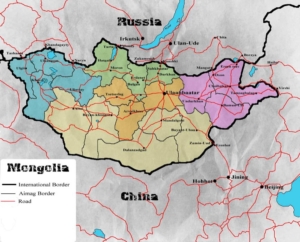Don’t Count On It!
Enough about Artificial Intelligence already. I promised myself I wouldn’t write about AI again. Then a friend shared a recent experience. She planned to drive her granddaughter from Denver, Colorado to Buffalo, New York and wanted to take in some of the sights along the way. After learning about ChatGPT at the local library, she asked for a route and roadside attractions along I-80. ChatGPT obliged with stops to “provide a mix of natural beauty, historical sites, and cultural experiences, making your journey along I-80 from Denver to Buffalo diverse and enjoyable.” Sounds wonderful, right?
Don’t get me wrong. I think the Bonneville Salt Flats, Salt Lake City’s Temple Square, Wyoming Territorial Prison, and the California Trail Interpretive Center in Elko, Nevada are fascinating and educational. The only problem: all these sights would require a 1,000 mile detour! My favorite attraction was the world’s largest Cheeto in Algona, Iowa, which was a mere four hour excursion off I-80. Other attractions didn’t exist, such as the world’s largest fork in Iowa. On the bright side, ChatGPT didn’t route my friend through Outer Mongolia.

AI developers acknowledge that the software will hallucinate—produce incorrect or fabricated information. So why do these hallucinations matter to us as writers? “Real facts” are important when writing our book. While it seems obvious that non-fiction must be as accurate as possible, fiction readers crave more than only entertainment. They want to come away from our books learning about an era, a career, a technology, or a culture they weren’t familiar with. Fans of police procedural or historical novels are quick to point out that a certain type of pistol only has six, not nine, rounds or buttonholes weren’t widely used prior to the Renaissance.
My friend isn’t alone in getting bad advice from ChatGPT. Ask the lawyers who were sanctioned for submitting AI generated briefs citing nonexistent cases. Or the scientific journal that issued a retraction for an article filled with nonsense illustrations.
My advice: if you use AI, don’t count on the results without independent verification. That’s the safer route my friend took.



 Later that day, I looked through the material he’d left and noticed that one item was an interview he’d conducted with the manager of Jimmy Connors, who was a world-class champion at the time.
Later that day, I looked through the material he’d left and noticed that one item was an interview he’d conducted with the manager of Jimmy Connors, who was a world-class champion at the time. I went to my back files, found the issue I was looking for, and flipped to the page with my interview on it. Everything was identical, down to the last comma and period, except for the photos and the freelancer’s name instead of mine in the byline.
I went to my back files, found the issue I was looking for, and flipped to the page with my interview on it. Everything was identical, down to the last comma and period, except for the photos and the freelancer’s name instead of mine in the byline.
